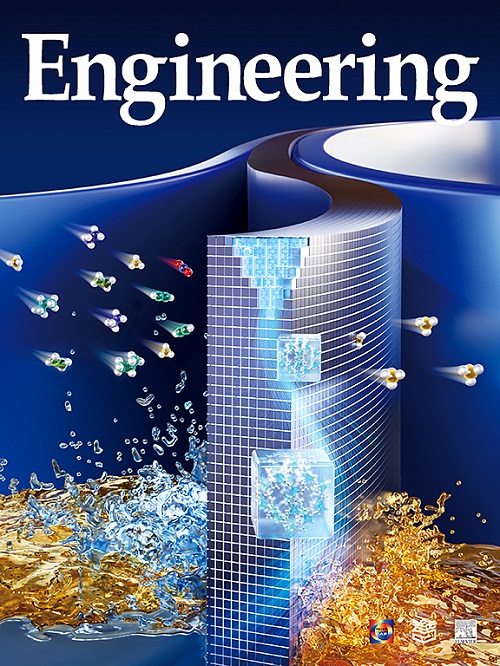Bioinspired Surface Engineering with Dual Covalent Receptors Incorporated via Precise Post-Imprinting Modification to Enhance the Specific Identification of Adenosine 5′-Monophosphate
IF 10.1
1区 工程技术
Q1 ENGINEERING, MULTIDISCIPLINARY
引用次数: 0
Abstract
Expanding the specific surface area of substrates and carrying out precise surface engineering of imprinted nanocavities are crucial methods for enhancing the identification efficiency of molecularly imprinted polymers (MIPs). To implement this synergistic strategy, bioinspired surface engineering was used to incorporate dual covalent receptors via precise post-imprinting modifications (PIMs) onto mesoporous silica nanosheets. The prepared sorbents (denoted as “D-PMIPs”) were utilized to improve the specific identification of adenosine 5′-monophosphate (AMP). Significantly, the mesoporous silica nanosheets possess a high surface area of approximately 498.73 m2∙g–1, which facilitates the formation of abundant specific recognition sites in the D-PMIPs. The dual covalent receptors are valuable for establishing the spatial orientation and arrangement of AMP through multiple cooperative interactions. PIMs enable precise site-specific functionalization within the imprinted cavities, leading to the tailor-made formation of complementary binding sites. The maximum number of high-affinity binding sites (Nmax) of the D-PMIPs is 39.99 μmol∙g–1, which is significantly higher than that of imprinted sorbents with a single receptor (i.e., S-BMIPs or S-PMIPs). The kinetic data of the D-PMIPs can be effectively described by a pseudo-second-order model, indicating that the main binding mechanism involves synergistic chemisorption from boronate affinity and the pyrimidine base. This study suggests that using dual covalent receptors and PIMs is a reliable approach for creating imprinted sorbents with high selectivity, allowing for the controlled engineering of imprinted sites.
通过精确的印模后修饰加入双共价受体的生物启发表面工程,提高对 5′-单磷酸腺苷的特异性识别能力
本文章由计算机程序翻译,如有差异,请以英文原文为准。
求助全文
约1分钟内获得全文
求助全文
来源期刊

Engineering
Environmental Science-Environmental Engineering
自引率
1.60%
发文量
335
审稿时长
35 days
期刊介绍:
Engineering, an international open-access journal initiated by the Chinese Academy of Engineering (CAE) in 2015, serves as a distinguished platform for disseminating cutting-edge advancements in engineering R&D, sharing major research outputs, and highlighting key achievements worldwide. The journal's objectives encompass reporting progress in engineering science, fostering discussions on hot topics, addressing areas of interest, challenges, and prospects in engineering development, while considering human and environmental well-being and ethics in engineering. It aims to inspire breakthroughs and innovations with profound economic and social significance, propelling them to advanced international standards and transforming them into a new productive force. Ultimately, this endeavor seeks to bring about positive changes globally, benefit humanity, and shape a new future.
 求助内容:
求助内容: 应助结果提醒方式:
应助结果提醒方式:


